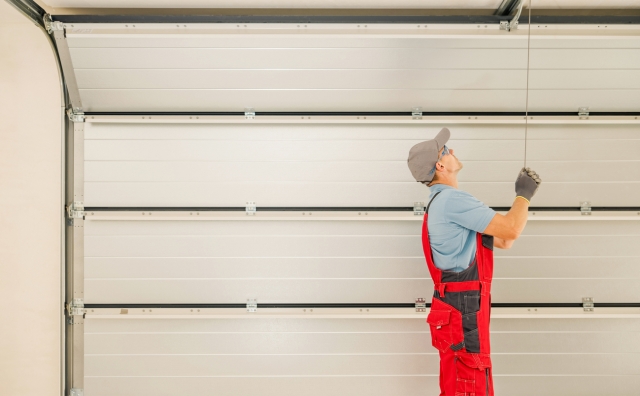Garage doors are one of the most heavily used mechanical systems in the average home, yet they often receive insufficient attention. From protecting vehicles to serving as an entry point into the house, these doors operate thousands of times each year, silently doing their job until something goes wrong. Unfortunately, when a garage door fails, it's rarely at a convenient moment.
Neglecting regular maintenance can lead to a cascade of problems that cost more than just money—they can compromise your home's security, energy efficiency, and even safety. Here's why staying ahead of garage door issues matters, what signs to watch for, and what to do if you've already let things slide.
Garage Doors Work Harder Than You Think
Think about how many times you open and close your garage door in a single day. Multiply that by the days in a year, and you've got hundreds—if not thousands—of cycles annually. Now, imagine if you never changed the oil in your car or had it inspected. Garage doors endure a comparable level of mechanical stress, and yet many homeowners rarely inspect or service them.
The average garage door is composed of dozens of moving parts, including torsion springs, cables, rollers, and hinges—all of which are prone to wear and tear. Left unchecked, the stress from constant use can gradually misalign components or cause parts to fail outright.
Minor Problems That Become Major Repairs
One of the biggest mistakes homeowners make is assuming a noisy garage door is simply annoying, not urgent. In reality, many serious repairs begin with subtle warning signs that are easy to overlook:
- Squeaking or grinding sounds
- Delayed door response
- Sagging sections or uneven movement
- Remote controls that work inconsistently
These seemingly minor symptoms often signal more significant issues, such as a failing motor, frayed cables, or unbalanced springs. Addressing these early can mean the difference between a minor tune-up and a major repair. For example, a worn spring might cost a few hundred dollars to replace, but if it snaps unexpectedly, it can damage the opener, bend the tracks, or even cause injury.
DIY vs Professional Intervention
There's plenty a savvy homeowner can do to extend the life of their garage door. Lubricating the rollers and hinges, tightening bolts, and checking the door's balance can go a long way. A seasonal visual inspection to spot frayed cables, rusted parts, or unusual movement is also good practice.
That said, certain issues are better left to professionals. Torsion springs, for instance, are wound under extreme pressure and can cause serious injury if handled improperly. Similarly, track realignment and opener diagnostics may require specialized tools or knowledge. It's often after a few failed repair attempts that homeowners begin searching for a garage door repair company they can trust to handle more technical or urgent issues.
The Energy Efficiency Factor
Garage doors don't just impact convenience—they also influence your home's energy footprint. A garage door with poor insulation or cracked weatherstripping can create gaps that allow outdoor air to seep in, placing added strain on your HVAC system. This is particularly noticeable if your garage is attached to your home or includes conditioned living space above it.
Even small air leaks can result in noticeable increases in heating and cooling costs over time. Ensuring your garage door is properly sealed and balanced helps maintain a consistent temperature, reduce energy usage, and prevent unnecessary wear on nearby systems.
Safety Hazards You Didn't See Coming
Malfunctioning garage doors aren't just inconvenient—they can be dangerous. According to safety reports, garage door accidents account for thousands of injuries each year, many involving fingers caught between panels or doors falling unexpectedly. Worn springs, misaligned sensors, or aging cables are often to blame.
Outdated safety systems can also pose hidden risks. If your automatic reversal mechanism hasn't been tested in years, it may not function properly when it matters most. A sudden failure while someone or something is beneath the door can have devastating consequences. Regular inspections ensure that safety features are operational and up to current standards.
What Regular Maintenance Actually Looks Like
Fortunately, keeping your garage door in good shape doesn't require a professional every month. A simple seasonal routine can help you stay ahead of problems:
- Lubricate all moving metal parts with a silicone-based spray
- Inspect for visible wear on cables, pulleys, and rollers
- Test the door's balance by lifting it manually—it should stay in place
- Clean the tracks to remove debris and buildup
- Check that the safety reversal sensors are aligned and functioning
Homeowners should consider scheduling a professional inspection at least every two years, or more frequently if the door is older or used frequently. Think of it like preventive maintenance for any major appliance: it's far cheaper to service a working system than to fix a broken one.
Conclusion: Prevention Is Always Cheaper Than Repair
Garage doors tend to stay out of sight and out of mind—until they don't. And when they stop working, the problems rarely stop at inconvenience. From energy loss and costly repairs to legitimate safety risks, the true price of neglecting garage door maintenance adds up quickly.
Understanding how these systems work, identifying early warning signs, and knowing when to call in a professional can help homeowners save money, reduce stress, and avoid potential danger. While it's tempting to ignore the occasional squeak or stutter, those minor annoyances could be the start of something much bigger. In cases like these, consulting a reliable garage door repair company is often the best and safest course of action.






